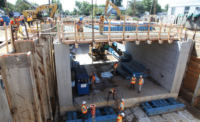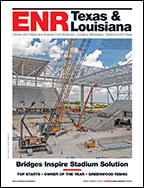After contractual juggling and debates over the alleged dangers of steel rail ties, Austin’s Capital Metro opened its 32-mile MetroRail commuter line between the city of Leander, Texas, and Austin’s downtown Convention Center on March 22, a year later than originally planned.
“The overall integration of the Centralized Traffic Control (CTC) system took longer to implement than anticipated,” Capital Metro spokesman Adam Shaivitz says. Last August, board-meeting minutes indicate, a system used for switching from freight to passenger rail had field-test problems.
The opening comes more than five years after voters approved the “All Systems Go Plan” referendum. The agency had awarded Veolia Transportation, Lombard, Ill., a $113-million contract, including a 15% contingency, to manage commuter and freight traffic through 2013. In December 2009, the agency terminated that contract over what Shaivitz says was an insurance issue.
Herzog Transit Services, St. Joseph, Mo., now has a $61-million contract to manage passenger rail. Watco Cos. Inc., Pittsburg, Kan., won a $33.9-million contract for freight. Capital Metro claims it can save $3.1 million, plus $10.7 million in contract negotiations.
Local media raised the use of steel ties instead of wood ties as another issue. Steel ties have tended to interfere with track signaling systems, say industry experts.
“The signal issue has been a big one, and lateral stability of the track has been a big one,”says Al Reinschmidt, vice president of commercial programs for the Transportation Technology Center in Pueblo, Colo. “They slide sideways too easily.” The steel ties are working fine with the Austin signal system, says Shaivitz. He says steel ties are less expensive in the long run because they last 1.5 times longer than wood ties.



Post a comment to this article
Report Abusive Comment